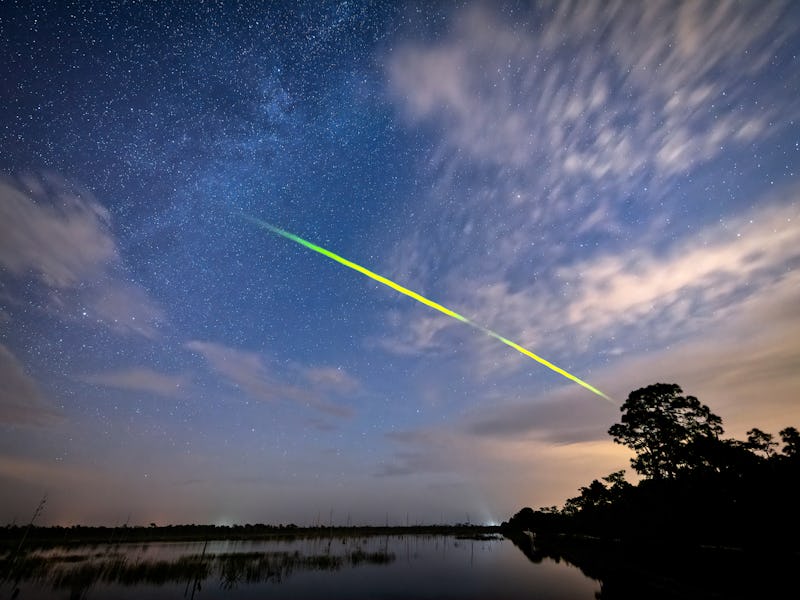Eta Aquarids: This Spring’s Best Meteor Shower Is Peaking and You Cannot Miss It
April showers might bring May flowers, but May also brings a meteor shower.

If you’ve ever wanted to watch stray bits of debris from Halley’s Comet pummel Earth’s upper atmosphere, this week is your chance.
The Eta Aquarid Meteor shower will be at its busiest now through May 10, with the show peaking in early predawn hours of May 5. Earth is crossing a trail of dusty debris left in the wake of Halley’s Comet, and as those bits of dust patter against Earth’s atmosphere — like space bugs on a cosmic windshield — they disintegrate in bright bursts of light. At its peak, the Eta Aquarids should send about 30 meteors an hour streaking across the predawn sky.
A rare Green Fireball meteor from the Eta Aquarid Meteor Shower around 5 a.m. in Babcock Wildlife Management Area near Punta Gorda, Florida
We last saw Halley’s Comet when it swooped through the inner Solar System in 1986, and it won’t return until 2061, but the comet left a long, messy debris trail for us to remember it by. Earth crosses this particular debris trail twice on its way around the Sun: once in late April and early May, and again in mid-October, causing the Orionid meteor shower. The Eta Aquarids slam into Earth’s atmosphere at a dizzying 148,000 miles per hour, which means that as they disintegrate, they leave long streaks of light in their wake, which can last for several seconds, so these meteors are worth staying up late or getting up early to see.
For the best viewing, find an open area with a wide view of the sky, as far as possible from city lights. Remember to turn off your phone, your flashlight, and your car’s headlights, and give your eyes at least half an hour to adjust to the darkness. Thanks to a cool optical illusion, the meteors will appear to radiate from Eta Aquarii, one of the brightest stars of the constellation Aquarius, but don’t panic if you’re not an expert star-finder: Meteors will be visible all over the sky.